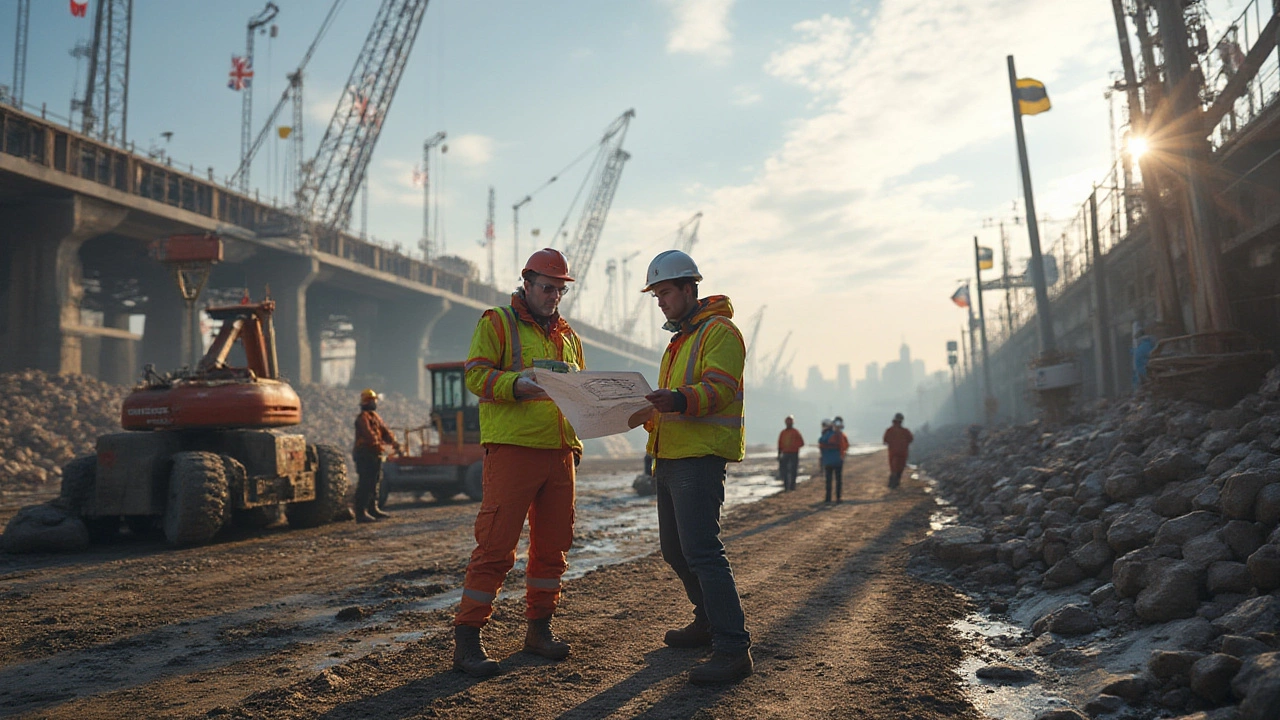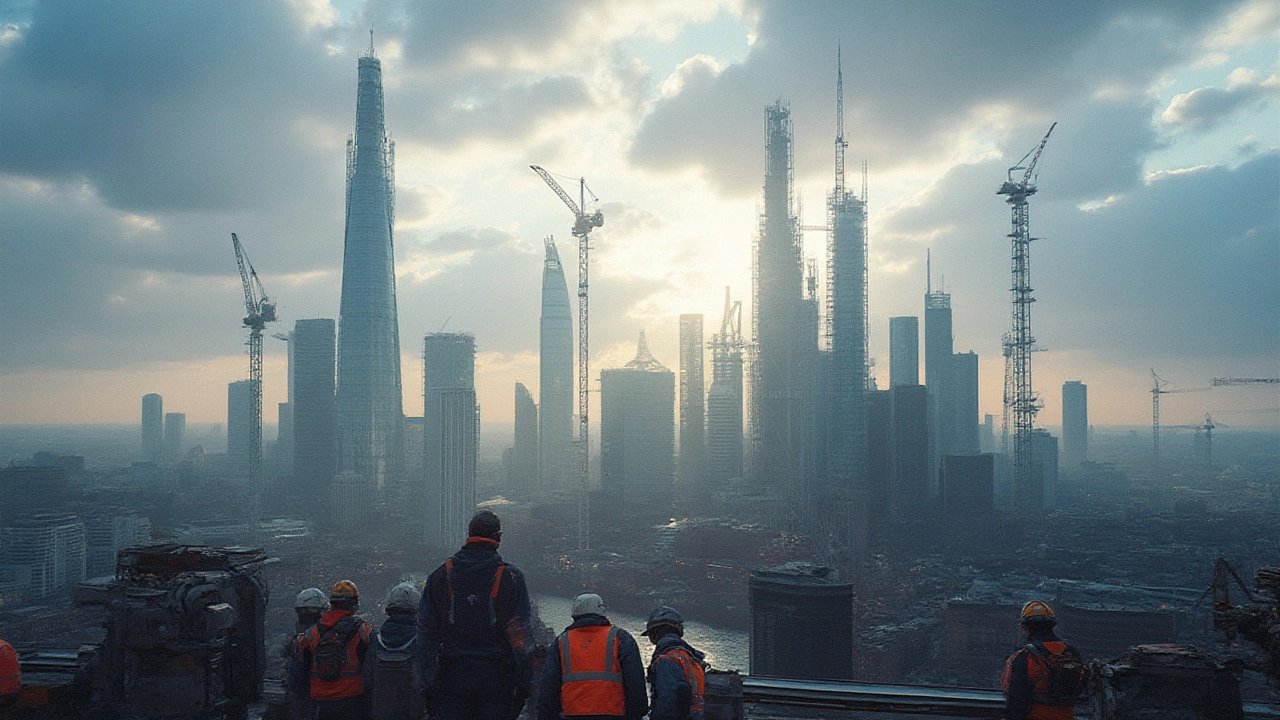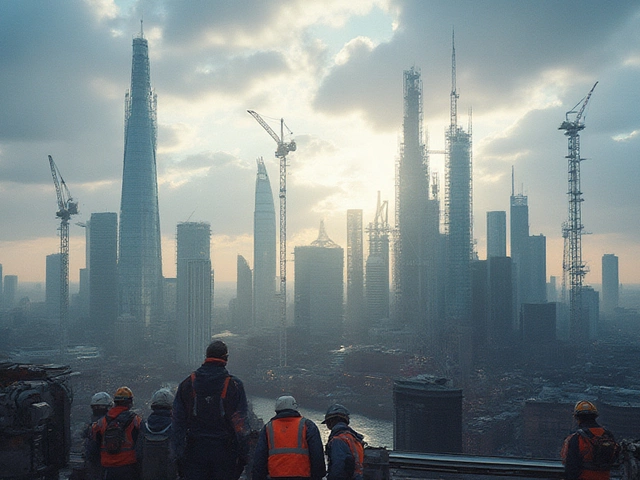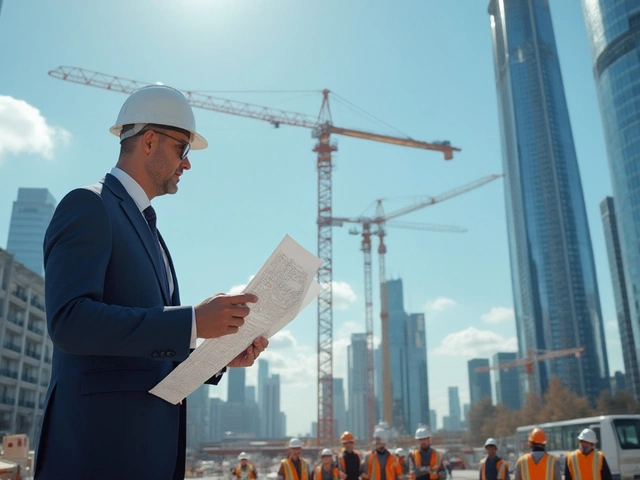What does it take for a company to reshape skylines, build economies from the ground up, and leave its mark in every corner of the world? The biggest construction companies do that every single day. Their cranes dot cities from Tokyo to Toronto. Their projects include tunnels under seas, highways soaring over mountain ranges, cities rising out of deserts. These aren’t ordinary firms—they’re giants, and the way they work leaves big footprints in global infrastructure, engineering, and even politics. Whether you’re fascinated by megaprojects or just want to know who’s really setting the pace in construction, the companies on this list are names you should know.
The Heavyweights: Who Rules the Global Construction Industry?
Out of thousands of construction companies across the world, just a handful have reached the very top—combining sheer scale, technical wizardry, and the guts to take on impossible missions. Most of these giants come from China, Europe, and the U.S., where billion-dollar projects almost seem routine. Let’s dive into the big names:
- China State Construction Engineering Corporation (CSCEC): The biggest of them all. CSCEC isn’t just China’s largest—it’s the world’s largest by revenue, clocking more than $300 billion in annual contracts. Want a number that sticks? CSCEC’s value of completed projects each year is higher than the GDP of countries like Finland or New Zealand.
- Vinci SA: This French multinational is famous for its highways, airports, and green energy megaprojects in over 100 countries. Vinci actually operated over 45,000 miles of toll roads in the Eurozone alone, and its 2024 revenue topped €68 billion.
- China Railway Group (CREC): This state-owned titan specializes in high-speed rail, subways, and complex bridges. CREC’s network of engineers literally built over two-thirds of China’s high-speed rails. In 2024, it reported revenue just shy of $180 billion.
- Skanska: Sweden’s proud giant. Skanska is everywhere, from New York's LaGuardia Airport revamp to green office towers in London. Sustainability is baked into their contracts, and they consistently rank high on global ‘green builder’ lists.
- ACS Group: ACS, headquartered in Spain, grabbed attention with projects like the ongoing subway lines beneath Sydney and massive roadways across Latin America. They’ve led the industry in public-private partnership (PPP) deals for a decade.
- Bouygues Construction: Another huge French player, Bouygues has constructed iconic stadiums, skyscrapers, and was key in the development of the Channel Tunnel.
- Strabag: Austria’s Strabag is Europe’s go-to for tunnels and roads, and they’re pushing tech boundaries in 3D printing and modular construction.
- Power Construction Corporation of China (PowerChina): The leader in hydroelectric and renewable projects, responsible for huge wind farms and the world’s largest ongoing dam projects.
- Bechtel: Out of San Francisco, Bechtel has built everything from Hoover Dam to city-sized oil refineries in the Middle East. It’s still the largest privately-owned construction firm in America, and has delivered over 25,000 projects in 160 countries.
- Hochtief: The German trailblazer that owns Turner Construction in the U.S., Hochtief is known for innovative skyscraper builds and groundbreaking urban transport systems.
Here’s a look at these companies side by side, based on revenue for 2024:
| Company | Country | 2024 Revenue (USD billion) | Known For |
|---|---|---|---|
| CSCEC | China | 305 | Megaprojects, Urbanization |
| Vinci SA | France | 74 | Infrastructure, Airports |
| CREC | China | 175 | High-Speed Rail, Bridges |
| Skanska | Sweden | 23 | Green Building, Public Projects |
| ACS Group | Spain | 39 | PPP Projects, Civil Works |
| Bouygues | France | 41 | Tunnels, Stadiums, Urban |
| Strabag | Austria | 20 | Tunnels, Roads, Modular |
| PowerChina | China | 85 | Hydro, Renewable Energy |
| Bechtel | USA | 19 | Energy, Civil Megaprojects |
| Hochtief | Germany | 27 | Skyscrapers, Transportation |
Even among these players, you’ve got big rivals—and often, these firms work together or compete for some of the same mega-bids. In today’s world, these are the grand storytellers of our built world.

What Sets the Global Leaders Apart?
It’s not just about revenue. The leading construction firms change the world in other ways. First off, their scale of work is mind-blowing. Take China State Construction Engineering Corporation—they’ve finished so many apartment blocks in one year, it’s enough to house the whole population of Sweden. But size isn’t everything. These companies push boundaries in technology, safety, sustainability, and global reach.
Technology runs through every job site now. Vinci and Skanska, for example, use digital twins and AI-powered sensors to catch flaws before concrete even gets poured. Strabag has entire teams experimenting with 3D-printed buildings, which could eventually build homes much faster and cheaper. If you thought drones were just for Instagram videos, Bouygues uses entire fleets to survey sites and cut down on inspection times by 40%.
Safety? It’s a huge deal—no joke. Bechtel once paused 100+ projects for a day to retrain everyone on safety. These companies compete on reputation and track record, because on big projects, mistakes cost lives and millions. CREC, in 2024, claimed an industry record low in workplace incidents—no small feat considering they employ over 300,000 people worldwide.
Sustainability has grown from a buzzword to a demand from investors, cities, and even customers. Skanska’s green office towers shave energy use by over 70% compared with typical high-rises. ACS Group lately requires partners to meet ‘net zero’ carbon targets or risk being dropped from a project. Vinci has entire business arms for renewable energy contracting, supporting everything from offshore windfarms to solar parks in remote parts of Africa.
This reach enables cross-border skills to flow. The technology used to build earthquake-proof bridges in Japan might end up redesigning tunnels in Germany. And these companies are often first on the ground after disasters—PowerChina mobilized thousands of workers and resources following the East Africa cyclone in early 2025, rebuilding essential roads and clinics in record time.
Their human power is staggering, with many top firms employing hundreds of thousands, or in CSCEC’s case, over 400,000 people. This isn’t just about headcount, though—it’s about orchestration. If you’ve ever wondered how the Burj Khalifa or the new Istanbul Airport actually got built, it’s thanks to the unique ability of these corporate giants to coordinate mega-projects across thousands of suppliers and tiny contractors, keeping everyone on schedule under massive deadlines.
One of the most interesting parts? Partnerships are the new normal. Global construction is less about national champions and more about joint ventures: you’ll often see Hochtief and ACS teaming up, or a Japanese railway builder like Shimizu joining forces with CREC.
And size sometimes means a company can deal flexibly with global supply snags. When the 2024 Suez Canal bottleneck hit, for example, Vinci and Bouygues were able to reroute materials using private logistics subsidiaries, keeping huge projects on track while smaller competitors stalled for weeks.

Up Close: Signature Projects, Big Risks, and Where the Industry Goes Next
Signature projects are where reputations are made. If you look at any of the world’s record-breaking buildings or mind-blowing feats of engineering, odds are good that one of these top firms had a hand in it. For instance, CSCEC famously finished the Beijing Daxing International Airport—the so-called ‘Starfish’ airport—in under five years. Vinci recently wrapped up the Grand Paris Express, Europe’s largest urban transit project, adding over 200 km of new metro lines and 68 stations to the French capital.
In the U.S., Bechtel played a key part in getting the new six-lane Frederick Douglass Tunnel in Baltimore rolling after decades of red tape. ACS managed much of Sydney’s WestConnex, the $16 billion series of underground expressways and giant flyovers.
Innovation is everywhere. Hochtief is piloting mammoth office buildings where no traditional scaffolding is needed—robots and smart winches do the job instead. Strabag successfully tested the use of 100% recycled concrete in Austria’s largest new shopping mall build. These little inventions often become standard across the whole industry within a couple of years.
Big risks aren’t just about money on the line. With political instability, ever-tougher climate rules, and labor shortages, these leaders have to think on their feet. CREC, for example, managed to avoid delays in Vietnam by shifting entire teams across country lines when local permits slowed. Meanwhile, PowerChina is investing in hydrogen megaprojects, betting that the next big energy transition will come from water-splitting technology.
Looking ahead, these top 10 are racing for the next frontier: artificial intelligence on job sites, autonomous machinery, carbon-capture cement, and green retrofits on a city-wide scale. They’re buying up tiny startups that might have the secret sauce for the next leap in construction—think self-healing concrete, climate-resilient urban design, and ultra-fast modular building systems.
But don’t forget: big isn’t always better everywhere. Mega-firms face challenges with nimble local competition, shifting labor costs, and public scrutiny. As they go global, these companies have to adapt—sometimes learning the hard way when projects run into legal, environmental, or social opposition.
For anyone in the game—engineer, architect, supplier, or investor—watching the top construction companies is like checking the pulse of the modern world. They lay the physical framework of our lives, and their projects shape the headlines, city skylines, and even the way we move. Bottom line? The biggest global builders deliver more than just buildings. They deliver the infrastructure of the future—one concrete pour, steel beam, and vision at a time.







